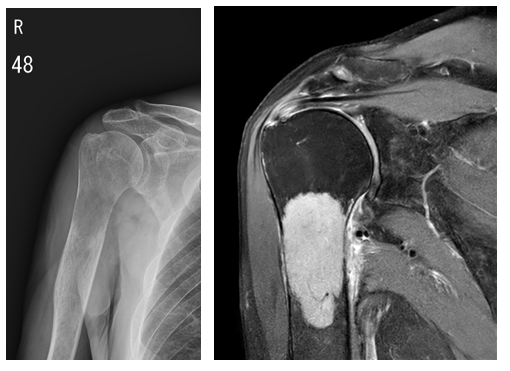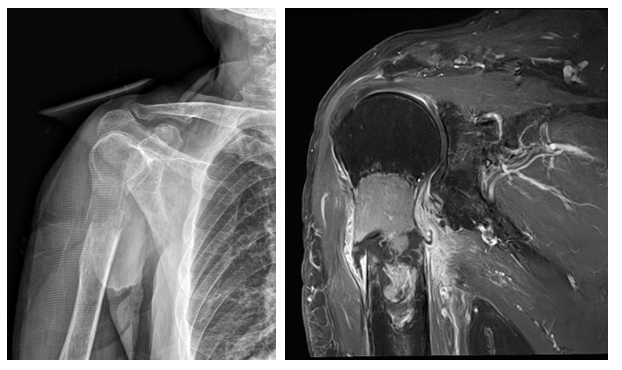Author: Min Wook Joo, MD, PhD
Description
Metastatic bone disease means that cancer arising from another body part (breast, prostate, lung, kidney, etc.) has spread to the bones. This can make the bone weak, painful, and more likely to break. These kinds of breaks are called pathologic fractures. Sometimes the bone hasn’t broken yet, but is at high risk of breaking soon—this is called an impending fracture.
Living with bone metastasis requires attention to symptoms and regular follow-up, because early signs of bone damage can prevent serious problems.
Symptoms
People with bone metastasis may feel:
- Deep, aching pain in the back, hips, legs, or arms
- Pain that gets worse at night or with activity
- A lump or swelling over a bone
- Weakness in the legs or numbness, especially if cancer has spread to the spine
- Sudden sharp pain during movement (may mean a fracture has occurred)
These are red flag signs people with bone metastasis should not ignore, as they may mean a bone is about to break:
- Sudden, severe pain without trauma
- Pain that worsens over time, especially when standing or walking
- Pain at rest or pain that wakes you at night
If you have any of these, see your orthopaedic oncologist right away.
Examination
Your doctor will ask about:
- Your cancer history
- The location and type of pain
- Any recent changes in function or strength
They will carefully check tenderness and range of motion, and see if you can safely put weight on or move the limb.
Tests
Tests may include:
- X-rays: usually the first and most cost-effective test. It helps doctors apply clinical tools to estimate fracture risk and guide treatment.
- MRI: useful for checking how far the tumor has spread inside the bone or into nearby soft tissues
- CT scans: provide details of the bone, showing the internal structure and any bone destruction more clearly.
Images
Figure 1 and 2: X-ray and MRI images of a patient with kidney cancer that has spread to the upper arm bone show an area where the bone has been damaged by the cancer.

Figure 1 and 2: X-ray and MRI images of the same patient show a broken bone caused by cancer (pathologic fracture).

Prognosis
As bone metastasis is usually not curable, but pathologic fracture can be managed. Treatment focuses on:
- Preventing fractures
- Relieving pain
- Maintaining mobility and quality of life
Surgery may be needed if a bone breaks or is likely to break. Your doctor may also recommend radiation to reduce pain and slow bone destruction.
Reporting new symptoms early and having regular checkups are key to living safely and comfortably with bone metastasis.
More Information:
https://orthoinfo.aaos.org/en/diseases--conditions/metastatic-bone-disease/
https://www.cancer.org/cancer/managing-cancer/advanced-cancer/bone-metastases.html
https://cancer.ca/en/cancer-information/cancer-types/metastatic/bone-metastases
This is not intended as a substitute for professional medical advice and does not provide advice on treatments or conditions for individual patients. All health and treatment decisions must be made in consultation with your physician(s), utilizing your specific medical information. Inclusion in this is not a recommendation of any product, treatment, physician or hospital.


